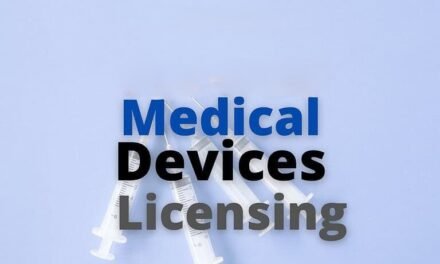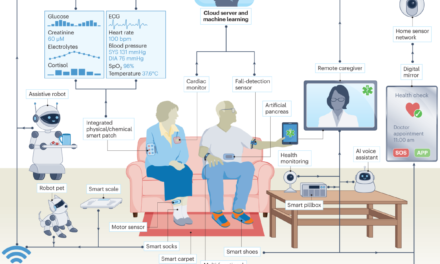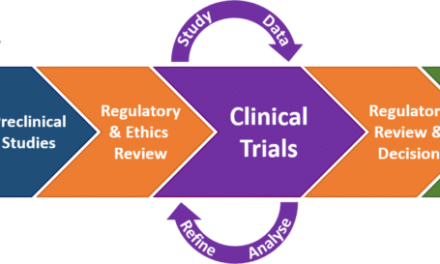
How are companies addressing the sustainability of medical devices?

Companies in the medical device industry are increasingly addressing sustainability to reduce their environmental impact while meeting regulatory and consumer expectations. This shift is driven by the need to balance healthcare innovation with environmental responsibility. Here are the key strategies companies are employing:
1. Sustainable Design and Manufacturing:
- Eco-Friendly Materials:
- Using biodegradable, recyclable, or reusable materials instead of single-use plastics.
- Incorporating plant-based or bio-derived polymers for disposable items.
- Reducing the use of toxic additives like phthalates and BPA.
- Lightweight Designs:
- Reducing material usage in device manufacturing to lower resource consumption and transportation emissions.
- Simplified Device Architectures:
- Designing devices with fewer components to facilitate recycling and reduce waste.
2. Circular Economy Practices:
- Device Refurbishment:
- Refurbishing and re-certifying medical devices for reuse, particularly large equipment like imaging machines and ventilators.
- Recycling Programs:
- Establishing take-back programs to recover valuable materials, such as metals from electronics and implants.
- Component Reuse:
- Developing modular devices with interchangeable parts to extend product lifespan and reduce waste.
- End-of-Life Management:
- Creating pathways for safe and efficient recycling or disposal of devices after their useful life.
3. Energy Efficiency in Manufacturing:
- Renewable Energy:
- Transitioning manufacturing facilities to renewable energy sources like solar, wind, or hydropower.
- Energy Optimization:
- Implementing energy-efficient equipment and processes to reduce carbon footprints.
- Carbon Neutral Goals:
- Many companies have committed to achieving carbon neutrality across their operations by specific target dates.
4. Sustainable Packaging:
- Reducing Packaging Waste:
- Minimizing packaging materials without compromising sterility or safety.
- Biodegradable Packaging:
- Switching to compostable or recyclable packaging materials.
- Reusable Packaging Systems:
- Introducing systems for bulk transport or reusable shipping containers.
5. Transitioning to Reusable Devices:
- Durable Products:
- Designing devices that can withstand multiple uses, such as sterilizable surgical tools.
- Eliminating Single-Use Plastics:
- Replacing disposable components with reusable ones wherever safe and feasible.
- Device Longevity:
- Increasing product durability to reduce the frequency of replacements.
6. Innovation in Sterilization:
- Energy-Efficient Sterilization:
- Using low-energy sterilization methods like vaporized hydrogen peroxide instead of high-energy autoclaves.
- Alternative Sterilants:
- Developing sterilization techniques that reduce the reliance on environmentally harmful chemicals like ethylene oxide.
7. Supply Chain Optimization:
- Local Sourcing:
- Procuring materials and components locally to reduce transportation emissions.
- Eco-Friendly Logistics:
- Partnering with logistics providers that use fuel-efficient or electric vehicles.
- Supply Chain Transparency:
- Auditing suppliers for environmental practices and ensuring alignment with sustainability goals.
8. Integration of Digital Solutions:
- Remote Monitoring and Diagnostics:
- Reducing the need for physical visits through telehealth-compatible devices, which decreases emissions from travel.
- IoT-Enabled Devices:
- Using IoT to optimize device performance and extend lifespan through predictive maintenance.
9. Adoption of Green Certification and Standards:
- ISO 14001:
- Implementing environmental management systems to identify and reduce environmental impacts.
- LEED-Certified Facilities:
- Designing manufacturing plants and offices to meet green building standards.
- EPEAT Certification:
- Ensuring electronic devices meet global sustainability standards.
10. Employee and Stakeholder Engagement:
- Training Programs:
- Educating employees about sustainable practices in design, production, and logistics.
- Sustainability Goals:
- Aligning organizational goals with broader environmental objectives and fostering accountability at all levels.
11. Partnerships and Collaboration:
- Industry Alliances:
- Joining consortia like the Healthcare Plastics Recycling Council (HPRC) to promote sustainability initiatives.
- Collaborations with NGOs:
- Partnering with environmental organizations to address medical waste challenges.
- Public-Private Partnerships:
- Working with governments to implement sustainable healthcare policies and practices.
12. Addressing E-Waste:
- Design for Disassembly:
- Making electronic devices easier to disassemble for recycling.
- Material Recovery:
- Extracting valuable metals like gold, silver, and platinum from e-waste.
- Responsible Recycling Programs:
- Ensuring compliance with regulations like the WEEE Directive for electronic waste management.
13. Public Awareness and Advocacy:
- Consumer Education:
- Informing patients and healthcare providers about proper disposal and recycling options.
- Marketing Sustainability:
- Highlighting eco-friendly product features to appeal to environmentally conscious buyers.
14. Metrics and Reporting:
- Sustainability Audits:
- Conducting regular assessments of environmental impact across operations.
- Carbon Accounting:
- Measuring and reporting greenhouse gas emissions to track progress toward reduction goals.
- Life Cycle Assessments (LCA):
- Evaluating environmental impacts from raw material extraction to end-of-life disposal.
15. Regulatory Compliance:
- Green Regulations:
- Adhering to environmental standards like the EU Green Deal or FDA guidelines for sustainable practices.
- Extended Producer Responsibility (EPR):
- Taking responsibility for end-of-life management of products.
Examples of Industry Leaders in Sustainability:
- Philips Healthcare:
- Committed to carbon neutrality and a circular economy by refurbishing imaging systems and recycling components.
- Johnson & Johnson:
- Focuses on eco-friendly materials and energy-efficient manufacturing.
- Medtronic:
- Actively works on reducing greenhouse gas emissions and introducing modular devices for extended use.
Sustainability in the medical device industry is evolving from a challenge to an opportunity. Companies are leveraging innovative designs, efficient manufacturing processes, and circular economy models to address environmental concerns. These efforts not only reduce environmental impact but also enhance brand reputation, align with regulatory demands, and meet growing consumer expectations for eco-friendly healthcare solutions. By integrating sustainability into their operations, medical device companies are paving the way for a greener future in healthcare.




























